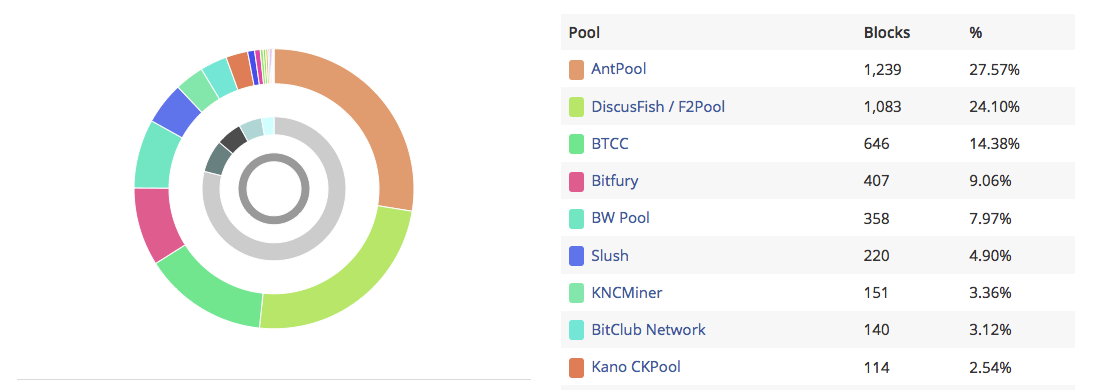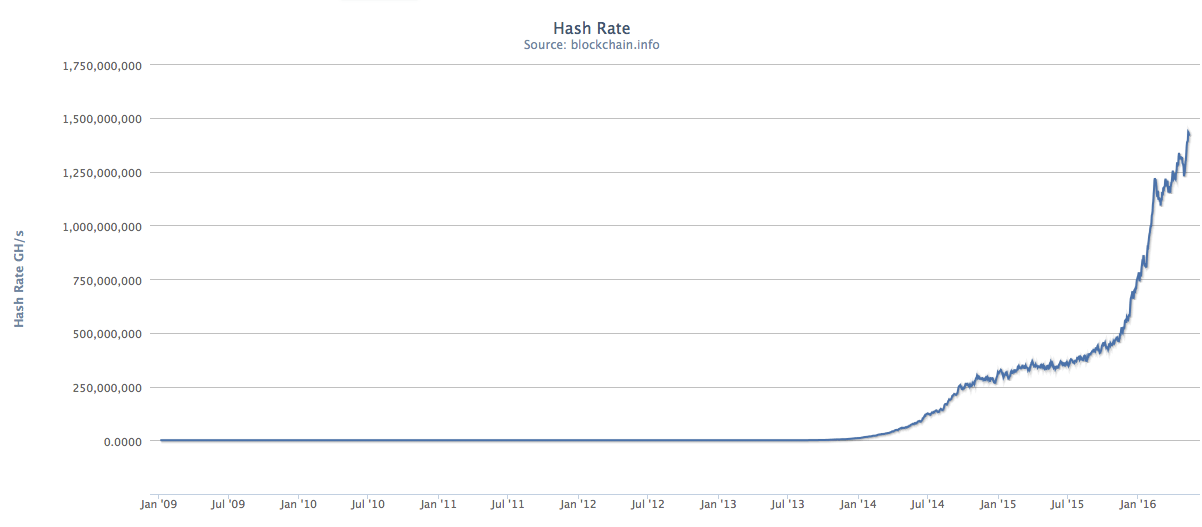Bitcoin Mining Centralization
In July 2014, mining pool Ghash.io frightened the Bitcoin community when it held more than 51% of the Bitcoin network hash rate.
Since the Ghash.io incident, the Bitcoin community has pushed developers and pool owners to create new solutions to ensure Bitcoin mining remains decentralized.
Why is Mining Centralization Bad?
Too much hash power controlled by one entity can cause Bitcoin to become similar to the payment systems and currencies it was meant to improve upon. A pool with more than 51% of the network hash power–like Ghash.io–can block transactions, double spend, and change other consensus rules.
Today’s Mining Centralization
Since the creation of Bitcoin mining pools, the hash rate distribution of Bitcoin has become increasingly centralized. Today, ~10 mining pools control most of the network. The largest four pools control ~75% of the hash rate, and the largest two control more than 50%.
Hope for Decentralization
Although mining today is somewhat centralized, not all hope is lost for increased decentralization in the future.
Slush Pool is one of the few mining pools to publically display mining pool statistics and voting. According to its stats page, Slush Pool’s hash power is made up of over 13,000 individual miners. This is promising because it shows that mining pools concentrate hash power, but don’t control it. At anytime, individual miners can solo mine or switch pools.
The situation is similar with China’s hash power. The country itself is home to between 60-70% of the Bitcoin network hash power. But the hash power in China is also made of individual miners that can switch pools at any moment.
Miners are in business to make money. A rational miner would switch pools if it was clear that the centralization of mining created Bitcoin price drops or prevented the price from rising.
Decentralized Pools
Decentralized mining pools, like P2Pool, can also help lessen centralization. With P2Pool, miners still share hash power and receive more frequent payouts, but instead use their own blockchain to track and distribute payments, rather than a decentralized service.
Ethereum creator Vitalik Buterin also suggests that easily installable software could further weaken large pools. Software that allows anyone to create a high quality mining pool would create more competition and create many smaller pools.
16nm Chips
Andreas Antonopoulos believes that 16nm ASICs could mark the end of mining centralization. Up until 16nm chips, the improvements made to ASICs had been exponential. This is visible in charts of Bitcoin’s hash rate (and difficulty):
Now that 16nm ASICs are on the market, Antonopoulos believes Moore’s Law will create a wall and only allow ASICs to get twice as powerful and efficient every two months.
The Future
Although not Bitcoin’s most pressing problem, it is clear that mining centralization poses a threat to Bitcoin’s core concepts. It is quite likely that Bitcoin’s developers will create new solutions to ensure Bitcoin remains decentralized once scalability has been solved.


